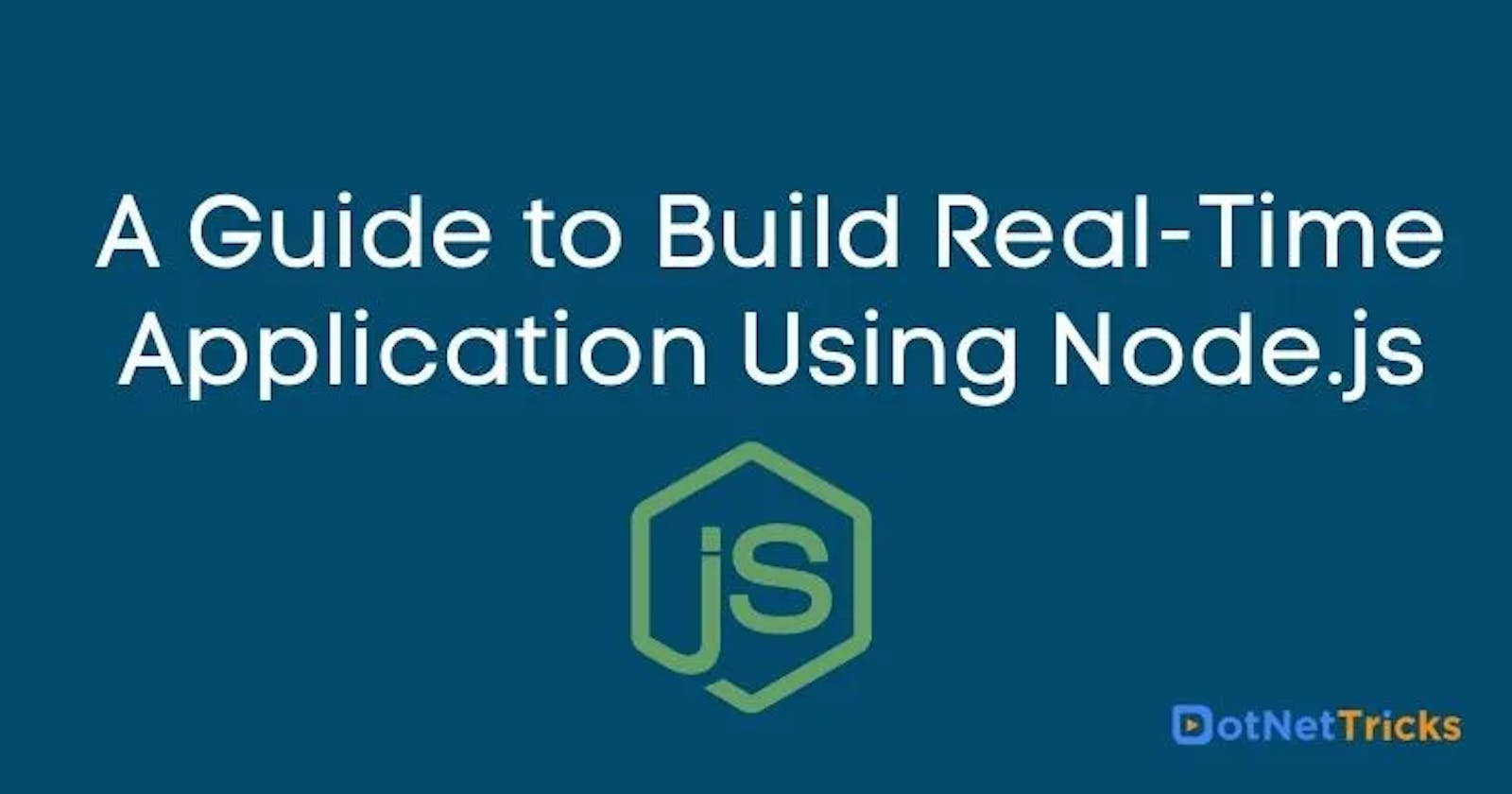how to use Node.js to build a high-performance real-time chat application, complete with code snippets to help illustrate the concepts.
Table of contents
No headings in the article.
If you enjoy this topic, you will probably like my articles, tweets, and stuff. If you're wondering, check out my YouTube channel and don't forget to subscribe and follow since I'm offering programming and motivating tools and information to help you achieve your dreams.
Node.js is a powerful platform for building server-side applications using JavaScript. One unique feature of Node.js is its ability to handle a large number of concurrent connections with high performance. In this article, we will explore how to use Node.js to build a high-performance real-time chat application, complete with code snippets to help illustrate the concepts.
To get started, we'll need to install Node.js and the necessary dependencies. The first step is to create a new directory for our project and initialize it as a Node.js project by running npm init in the command line.
Once the project is initialized, we'll install the following dependencies:
- Express: A popular web framework for Node.js that makes it easy to handle HTTP requests and responses.
npm install express
- Socket.io: A real-time engine that enables real-time, bidirectional communication between web clients and servers.
npm install socket.io
- Nodemon: A utility that automatically restarts the node application when file changes in the directory are detected.
npm install --save-dev nodemon
Next, we'll create an index.js file that will serve as the entry point for our application. We'll start by requiring the necessary dependencies and setting up our Express server.
const express = require('express')
const app = express()
const server = require('http').Server(app)
const io = require('socket.io')(server)
server.listen(3000)
Now, we can set up our Socket.io server to handle real-time communication.
io.on('connection', (socket) => {
console.log('User connected')
socket.on('disconnect', () => {
console.log('User disconnected')
})
socket.on('chat message', (message) => {
io.emit('chat message', message)
})
})
This code sets up a listener for new connections and disconnections, and also sets up an event listener for a 'chat message' event. When a 'chat message' event is received, it emits the message to all connected clients.
Now we can add some basic html and javascript to allow users to interact with the chat. We'll create a new index.html file in the root of our project directory, and add the following code:
<!DOCTYPE html>
<html>
<head>
<title>Real-time Chat</title>
<script src="/socket.io/socket.io.js"></script>
<script src="https://code.jquery.com/jquery-3.5.1.min.js"></script>
</head>
<body>
<ul id="messages"></ul>
<form action="">
<input id="m" autocomplete="off" /><button>Send</button>
</form>
<script>
var socket = io()
$('form').submit(function(){
socket.emit('chat message', $('#m').val())
$('#m').val('')
return false
})
socket.on('chat message', function(msg){
$('#messages').append($('<li>').text
(msg))
})
</script>
</body>
</html>
This code sets up a simple form with an input field and a submit button, and uses jQuery to listen for form submissions. When the form is submitted, it emits a 'chat message' event with the value of the input field, and clears the input field. It also sets up a listener for the 'chat message' event, and appends the message to a list on the page.
Finally, we'll need to serve the index.html file to clients when they visit our application. We can do this by using the express.static() middleware, which allows us to serve static files from a directory.
app.use(express. Static('.'))
With all this in place, we now have a basic real-time chat application that allows users to send and receive messages in real-time. Of course, in a production environment, you'll want to add additional features such as user authentication, message persistence, and more. But this should serve as a good starting point for building your own real-time chat application using Node.js and Socket.io.
In summary, building a high-performance real-time chat application with Node.js is relatively straightforward, thanks to the power of web sockets and the socket.io library. By following the steps outlined in this article, and using the code snippets provided, you should be able to build a real-time chat application with ease.
If you enjoy this topic, you will probably like my articles, tweets, and stuff. If you're wondering, check out my YouTube channel and don't forget to subscribe and follow since I'm offering programming and motivating tools and information to help you achieve your dreams.
